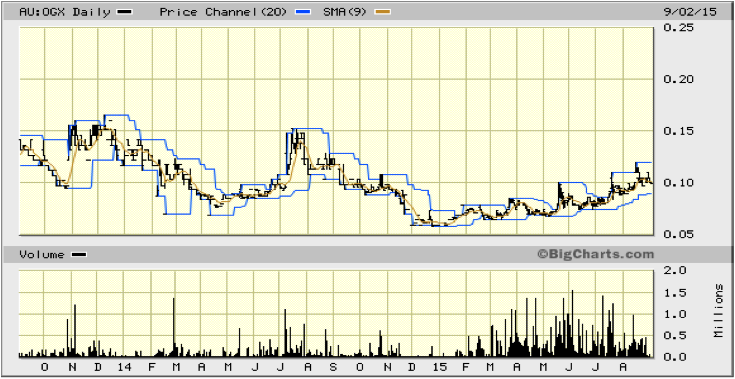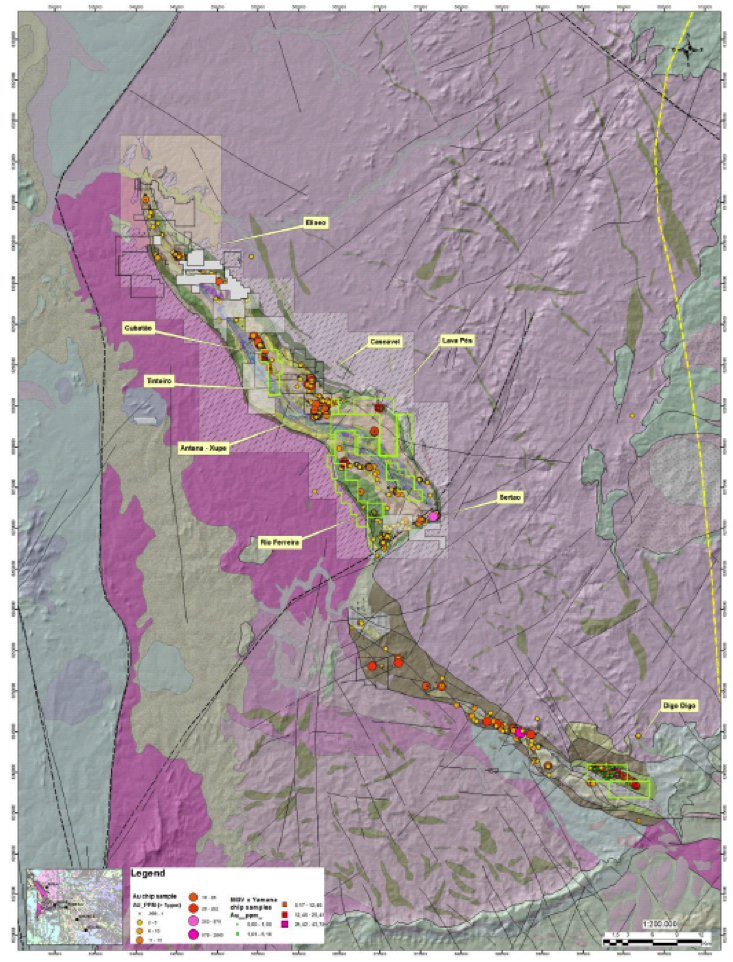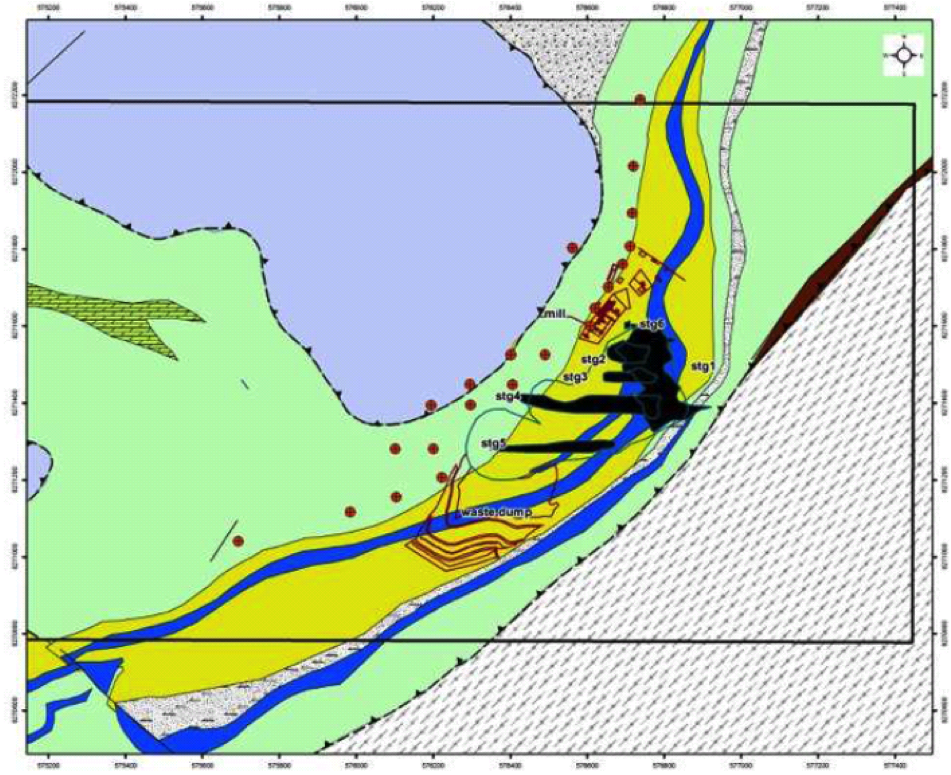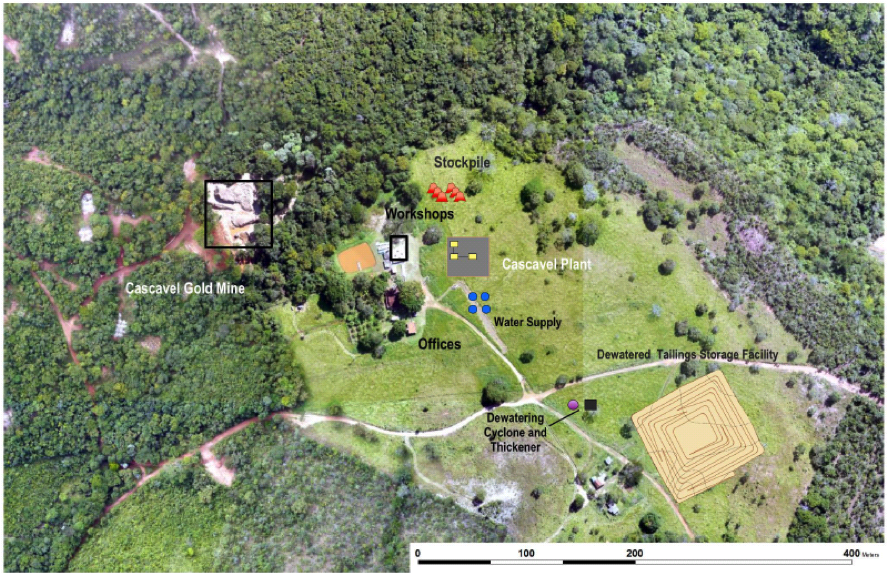Orinoco Gold is an emerging high-grade gold producer in Brazil. The company is minimising risk by developing a low-capex/low-operating cost mining operation at Cascavel, with strong resource upside.
| Corporate Details |  |
| Status: Emerging Producer | |
| Size: Small Cap | |
| Commodity Exposure: Gold | |
| Share Price: $0.099 | |
| 12-month Range: $0.058 – $0.12 | |
| Shares: 205m, Options: 120m | |
| Top 20: 56% | |
| Net Cash: $2.9m | |
| Market Value: $19m |
| Key Parameters | Rating (✓out of 5) | Quarterly Statistics |
| Management Quality | ✓✓✓✓✓ | Q2 2015 Exploration Spend: $0.742m |
| Financial Security | ✓✓✓✓✓ | Q2 2015 Administration Spend: $0.28m |
| Project Quality | ✓✓✓✓✓ | Exploration Spend 73%, Admin. Spend 27% |
| Exploration / Resource Potential | ✓✓✓✓✓ | Q3 2015 Forecast Exploration Spend: $2.58m |
| Project Risk | ✓✓✓✓✓ | Q3 2015 Forecast Admin. Spend: $0.7m |
Orinoco Gold represents a higher-risk/higher-reward investment opportunity due to the high-grade nature of its Brazilian gold projects. The company’s flagship Cascavel gold project will see the initial development of a relatively small-scale, low-cost start-up mining operation, with plans to increase both the gold resource base and mine-life through cashflow-funded exploration, minimizing both initial capex costs and overall risk exposure. Just as importantly the company has assembled a highly-experienced underground mining team.
The Cascavel gold project forms part of its broader Faina Goldfields Project, which encompasses around 300 sq km within Central Brazil. Simultaneous with ongoing development and eventual production, Orinoco is assembling an attractive pipeline of exploration and growth opportunities. Orinoco is confident that the mineralised system likely extends south from its developing Cascavel mine (1M oz resource potential) and north from its Sertão project (1M oz resource potential), with numerous gold anomalies in between.
Evidence of growing market interest is reflected in Orinoco’s solid recent share price performance, firming from a 12-month low around $0.06 during January to a recent high of $0.12. There appears to be a reasonable re-rating taking place ahead of H1 2016 production at Cascavel, with all project timelines so far being met. Another major benefit is the fact that the Brazilian Real gold price is the best-performer in the world at present, thus boosting project economics – and outshining even the Australian dollar gold price.
Recent Activity
Expanded Project Acreage
Orinoco has boosted its strategic position within the Faina Greenstone belt in central Brazil following the acquisition of an 80% stake in a 100 sq km portfolio of prime exploration acreage within close proximity to its flagship Cascavel gold mine. It entered an agreement with private Brazilian company, Mineração Goias Velho (MGV) to acquire the package, boosting its overall regional ground position to more than 300 sq km.

The newly-acquired tenements comprise 12 exploration concessions – of which ten are located within the central portion of the Faina Greenstone Belt between Cascavel and Sertão (which was mined historically by Troy Resources (ASX: TRY) and produced 250,000oz Au at a head-grade of 24.9g/t). A further two tenements are located in the southern portion of the Goiás Velho Greenstone Belt.
(The new tenements are in green, while all other tenements are Orinoco’s existing tenements).
Previous exploration work including rock chip sampling has returned very promising results over the area, with samples returning up to 43.7g/t gold. Historic largely RAB drilling also provides encouragement.
The new acreage is expected to provide an attractive pipeline of exploration and growth opportunities for Orinoco once it commissions its Cascavel mine during early 2016. Orinoco believes that the mineralised system is likely to extend south from Cascavel and north from Sertão into the newly-acquired acreage.
Maiden Sertão Drilling Campaign
Orinoco recently commenced a 23-hole/2,300-metre diamond drilling program at its Sertao gold mine in order to try and establish continuity of the gold mineralization.
The program will specifically test for extensions of known mineralisation and is aimed at establishing the down-plunge and along-strike continuity of high-grade gold mineralisation previously mined by Troy Resources between 2003 and 2005.

Geology of the Sertão area. Shown in black shading are the previously mined high-grade gold shoots. Red circles show the drill collars for Orinoco’s planned drill program.
The drilling program has several aims:
- Provide information regarding the ore shoot geometry and spacing at Sertão;
- Provide the basis for an Exploration Target at Sertão; and
- Provide in-fill drilling of gaps in previous drilling work, with the aim of calculating a Mineral Resource Estimate for Sertão.
The program will be executed in two phases, with the first phase designed to establish the down-dip continuation of the ore bodies from the previous shallow open-pits, whilst the second phase will test extensions along strike to the north of previously mined orebodies, including following up positive historical drill results recorded near the location of the previous processing plant.
Stage 1 drilling will comprise 13 drill-holes (spaced ~100 metres apart) for 2,105 metres located immediately down-dip from the old open-pits. The drilling will extend approximately 120-140 metres from the open-pit to the west, around 180 metres down-dip (vertical depth 110 metres) and 450 metres along strike.
Stage 2 drilling will comprise 8 drill-holes (spaced from 50 metres to 125 metres) for 760 metres, distributed along 650 metres of strike of the northern extension. One deep hole is planned to check the down-dip extension of main mineralised body and also an upper mineralized level intercepted in historical drilling.
Cascavel Plant Relocation
Orinoco recently secured all of the necessary approvals to allow it to construct its Cascavel processing plant at a location much closer to the Cascavel mine than previously allowed, resulting in significantly reduced annual operational costs of around $0.5 million.
The processing facility will now be situated just 200 metres from the Cascavel mine portal, instead of 28km away at the Sertão gold mine site. The plant will now be located in a central position in relation to other potential sources of mill feed such as Garimpo and Cuca, which are located close to Cascavel, while the Sertão site will remain free for an imminent drill campaign.

A number of significant savings in operational expenditure are expected to flow, including associated savings from road and truck maintenance as well as other savings associated with the reduced level of security and administration required to manage one site rather than two.
The plant location at Cascavel also provides future optionality in terms of having a centrally-located ore treatment facility relative to the company’s exploration projects within the broader Faina Goldfields Project.
Plant and Mine Development
Orinoco has reported that mine development, fabrication and construction activities are proceeding on schedule at Cascavel. The crushing circuit is currently being fabricated in Brazil under the supervision of Gekko systems, whilst the gravity circuit is being manufactured in Australia. Each module of the plant will be pre-assembled and factory commissioned prior to being delivered to site.
As a result, installation and commissioning is expected to take just six weeks, whilst civil engineering work for the plant site is expected to be completed by October. The crushing circuit is scheduled to be delivered to site during November, followed by the gravity circuit in December, which will enable the entire Cascavel plant to be commissioned during January 2016.
Two recent additions have been made to the Cascavel circuit – a secondary crushing unit (cone crusher) has been added in order to take some planned load off the tertiary crusher – whilst a slimes thickener has been added to the water and tailings module. The additional cost of these items will be offset against the capital savings achieved from the move to a single site.
Importantly, mine development continues to progress to plan. Whilst the development remains within the oxide/transition zone of the rock sequence, a key focus of the Cascavel mine portal has been the implementation of adequate ground support. Particular care is being taken to ensure that the portal is both safe and capable of serving as the main entrance point for the mine for many years to come. Hence the planned dimensions of the incline shaft have been increased to 3.5 metres x 2.8 metres.
Metallurgical Results
Gekko Systems has reported exceptional results from the gravity test-work program, which are considered to be at the upper-end of results achieved for coarse gold deposits. From a 70kg ore parcel, the Cascavel flow-sheet achieved gravity gold recoveries of:
- 89.4% gold recovery into 2.9% of the mass at a grade of 417 g/t Au; and
- 91.6% gold recovery into 5.9% of the mass at a grade of 209 g/t Au; and
- 95.6% gold recovery into 30% of the mass at a grade of 43g/t Au.
The Cascavel operation can achieve high gold recoveries from a modular gravity gold circuit that utilises standard, simple gravity recovery – with no chemicals or leaching. When combined with the fact that the gold is liberated without significant milling, this makes the overall treatment process highly cost-effective, whilst also reducing operational risks.
Investment Overview
The company’s strategy at Cascavel is to initially develop a relatively small-scale, start-up operation that can be expanded and extended via existing cashflow, thus minimizing capex and financing exposure. Cascavel forms part of the company’s broader Faina Goldfields Project, which now encompasses more than 300 sq km within Central Brazil. Gold mineralisation at Cascavel is vein and shear-hosted orogenic in style, which means it’s typically high-grade, coarse and free-milling in nature – which are all positives.
The only downside is that this style of mineralization, combined with the narrow mineralised lode structures, precludes the accurate and cost-effective calculation of grade for a JORC-compliant resource. This is due to the likelihood of inherent sampling bias and the requirement for very high-density drilling. Orinoco is targeting an initial JORC-compliant resource estimate prior to the end of 2015.
The good news is that the mineralisation is virtually identical in style to that at Anglo’s Crixas mine (2.3Moz @ 7.76g/t Au) and Yamarna’s Pilar Mine (1.4Moz @ 4.1g/t Au), along with numerous other examples within the five parallel greenstone belts hosted within the region. Furthermore, we are confident that Cascavel can deliver high-grade ore after dilution at the minimum mining widths of around 1.5 metres.
Data from historic mining, along with recent bulk and channel sampling by Orinoco, suggests diluted grades within the high-grade shoots in the vicinity of 15g/t – 30g/t, whilst even more recent bulk and panel samples have assayed between 24g/t and 88g/t Au.
Initial plans for Cascavel involve a four-year, 40,000tpa air-leg underground operation, with the expected 20g/t gold ROM ore treated with high recoveries through a simple gravity circuit, resulting in a low capex operation (~US$6.6 million), with C1 costs in the order of A$460/oz. Economics are enhanced by the strongly-performing Brazilian Real gold price, which is reflected in the accompanying graphic.
A key project strength is the potential for resource growth and production expansion, through extensions to the known mineralisation and via new discoveries. Key areas for expansion include down-dip and along strike at Cascavel, as well as underground mineralisation at Sertão, which historically produced 256,000oz of oxide gold from a shallow open-pit at an average grade of 24.95g/t Au.
Summary
The high-grade nature of the Cascavel mineralization suggests a relatively low-cost mining operation with robust margins. Recent share price appreciation indicates the market is becoming increasingly comfortable as development activity progresses in line with expectations. Accordingly, Orinoco Gold will remain on our Portfolio Watch-List.







